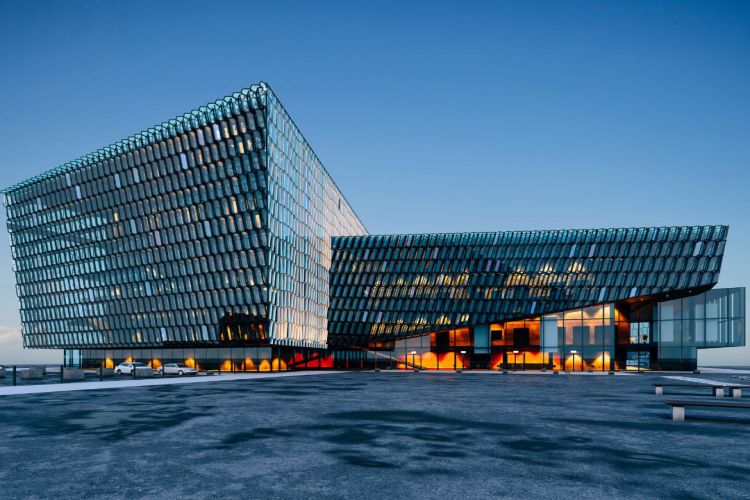 Metal cladding has become a popular choice in commercial architecture, offering a combination of aesthetic appeal, durability, and functional benefits. This versatile building technique involves applying metal panels to the exterior of structures, providing an array of design options, and enhancing both the visual impact and performance of commercial buildings. In this article, we will explore the advantages and applications of metal cladding in commercial architecture, highlighting its role in transforming the built environment.
Metal cladding has become a popular choice in commercial architecture, offering a combination of aesthetic appeal, durability, and functional benefits. This versatile building technique involves applying metal panels to the exterior of structures, providing an array of design options, and enhancing both the visual impact and performance of commercial buildings. In this article, we will explore the advantages and applications of metal cladding in commercial architecture, highlighting its role in transforming the built environment.
Aesthetic Versatility
Metal cladding offers architects and designers a wide range of aesthetic possibilities. With various metal options available, including aluminum, zinc, copper, and steel, architects can achieve diverse visual effects to match the desired design style. Metal panels can be smooth, textured, or patterned, providing opportunities for creating unique facades that stand out in the urban landscape. From sleek and modern to rustic and industrial, metal cladding allows for endless design expressions, enabling commercial buildings to make a powerful architectural statement.
Durability and Weather Resistance
One of the primary advantages of metal cladding is its durability and resistance to weathering. Metal panels are engineered to withstand the harshest elements, including UV radiation, moisture, wind, and temperature fluctuations. This inherent resilience ensures that the building envelope remains intact and protected over time, minimizing the need for costly repairs or replacements. Metal cladding offers long-term performance, maintaining its structural integrity and aesthetics for decades, even in demanding climates.
Low Maintenance Requirements
Metal cladding is renowned for its low maintenance requirements, making it an appealing choice for commercial buildings. Unlike traditional building materials that may require regular painting or sealing, metal panels are resistant to fading, chipping, and peeling. They are easy to clean and do not require intensive upkeep. Occasional inspections and routine cleaning are usually sufficient to keep metal cladding looking pristine. This advantage saves both time and resources for building owners and managers, allowing them to focus on other aspects of property maintenance.
Energy Efficiency
Metal cladding can contribute to improved energy efficiency in commercial buildings. Insulated metal panels can be used as part of the cladding system, providing enhanced thermal insulation and reducing heat transfer through the building envelope. By minimizing heat gain or loss, metal cladding helps maintain a comfortable interior environment while reducing the reliance on heating and cooling systems. Additionally, metal panels can be designed with reflective coatings to reduce solar heat absorption, further enhancing energy efficiency and reducing cooling loads.
Sustainable Material Choice
Sustainability is a growing concern in the construction industry, and metal cladding aligns well with sustainable building practices. Many metal materials used in cladding, such as steel and aluminum, are recyclable and can be sourced from recycled content, thus steel or aluminum suppliers are plentiful. Metal cladding systems can contribute to green building certifications and support sustainability goals. Additionally, metal cladding can be combined with other sustainable design features, such as rainwater harvesting systems or solar panels, further enhancing the eco-friendly profile of commercial buildings.
Design Flexibility and Adaptability
Metal cladding offers remarkable design flexibility and adaptability, allowing architects to achieve their desired vision. Metal panels can be custom-made to fit the specific dimensions and contours of the building, accommodating unique architectural shapes and features. This adaptability enables architects to create visually stunning facades and seamlessly integrate metal cladding with other building materials. Metal cladding can also be used for retrofit projects, transforming existing structures and giving them a modern and refreshed appearance.
Acoustic Performance
In addition to its visual and functional benefits, metal cladding can contribute to improved acoustic performance in commercial buildings. Metal panels can act as sound barriers, reducing external noise infiltration and enhancing the indoor acoustic environment. This feature is particularly advantageous for buildings located in busy urban areas or near transportation hubs. By incorporating metal cladding with sound-absorbing materials or using perforated panels, commercial buildings can create quieter and more comfortable spaces for occupants.
Metal cladding has revolutionized the field of commercial architecture, offering a compelling combination of aesthetic appeal, durability, and functional advantages. With its versatility, durability, low maintenance requirements, energy efficiency, sustainability, design flexibility, and acoustic performance, metal cladding has become a preferred choice for architects and designers. Its transformative impact on the aesthetics and performance of commercial buildings has made metal cladding an essential element in shaping the modern built environment.


